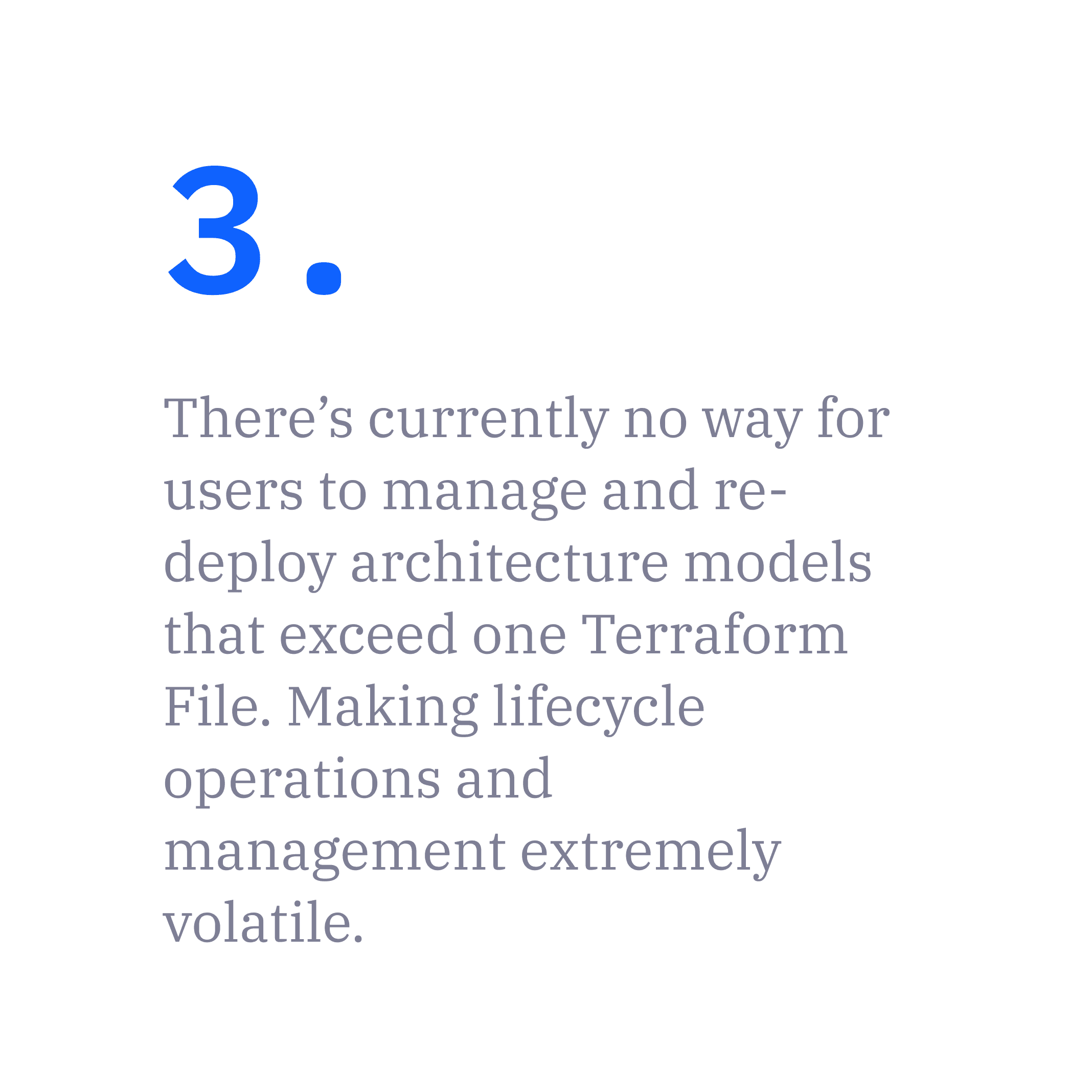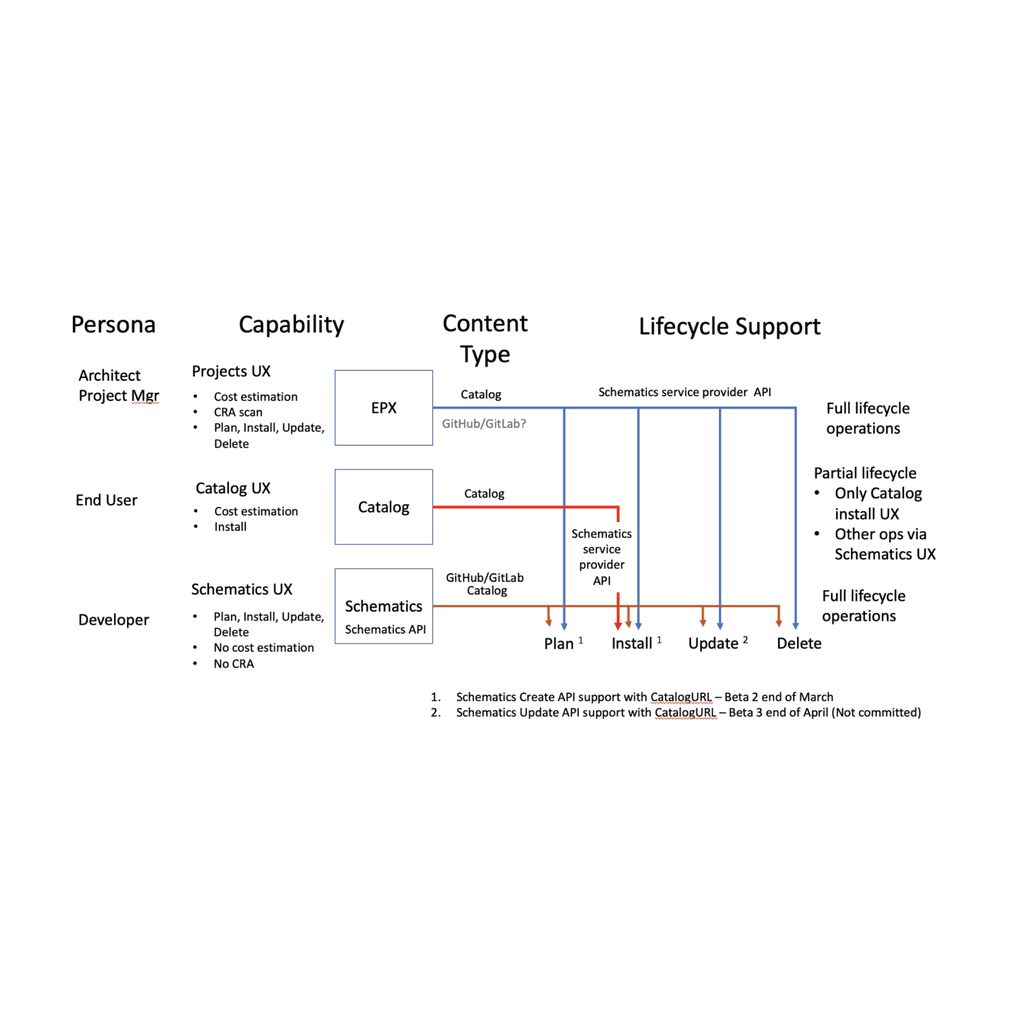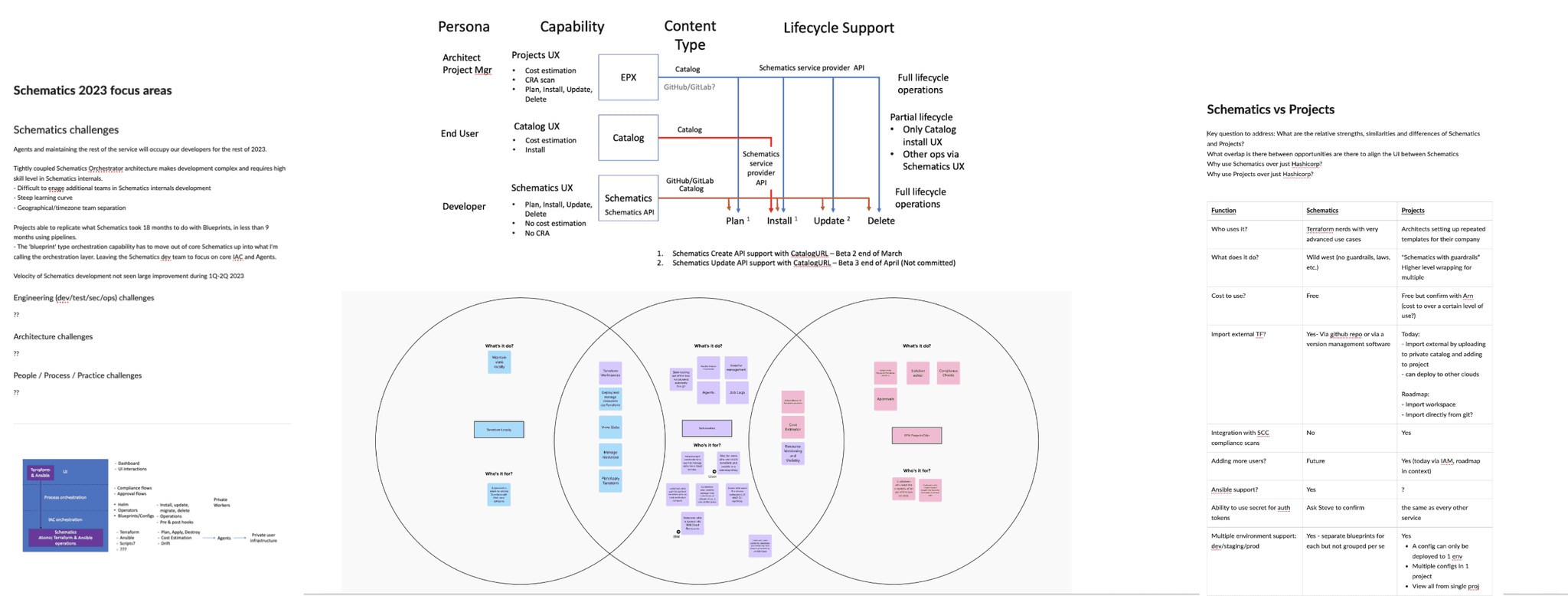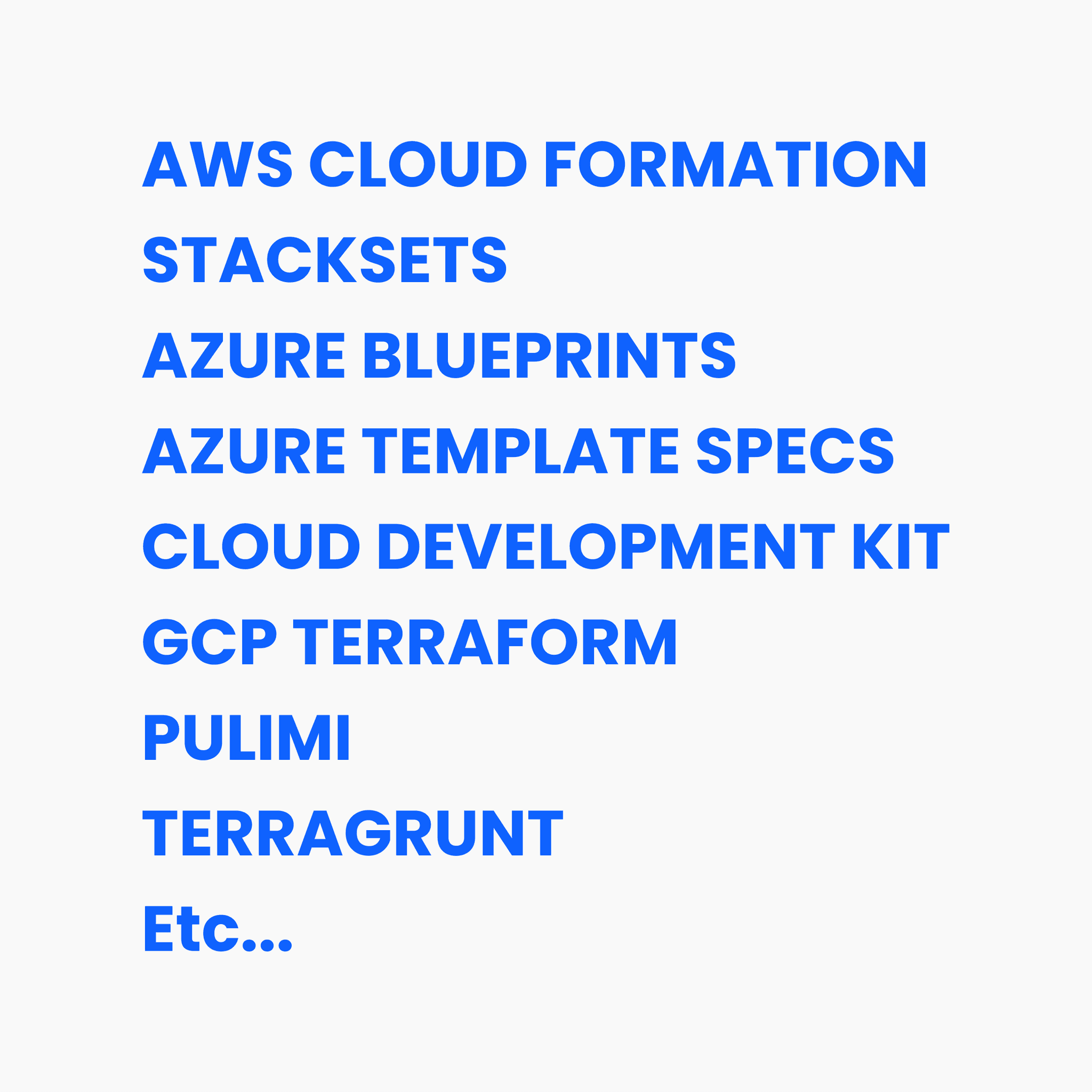My Role
Levelset
Challenge
Links
What is Terraform?
What is Schematics?
Think of Schematics as your one-stop-shop for provisioning IBM Cloud resources with Terraform. Users can write a script in the form of a Terraform file to provision large amounts of resources.
For instance, instead of manually setting up 67 various resources individually on IBM Cloud, you can use Terraform via Schematics to provision those 67 resources with a click of a button.

Primary Research
Some users were managing multiple Terraform files and chained them together within different UI screens.
Most users identified the need for having some form of nested TF files that can talk to one another.
None of the participants had heard of any offerings in the wild that accomplished exactly what they needed.
Users wanted to easily manage/view the health of multiple TF files in the same UI.
They wanted an easy to adopt mental model around how their TF files work together.
Defining Target Archetypes
Throughout the research process, we were able to synthesize our data and solidify two primary archetypes we were targeting for our solution:
Operations Team Managers:
They are in charge of an operations team that manages the stability and integrity of their infrastructure. They make sure the infrastructure is working efficiently while not wasting personnel hours. They typically have a lot on their plates, so ease of use/low barrier of entry is essential to them when choosing the right cloud provider.
Solutions Architects:
A solutions architect is someone who solves complicated problems around performance, scaling and security for either their business, or customers business'. They are generally responsible for maintaining the network and infrastructure. They strives to increase efficiency when possible by automating tasks and processes.
Deconflicting products/business need
During the process of ideation, I ran into a challenge where another offering currently being developed on the IBM Cloud platform that was being designed to do a similar function.
I regularly had meetings with the architects, developers, PM’s, designers, etc. to help create artifacts, positioning documents, and create an identity for each offering that was distinct from the other — So when users come to our cloud, they know instantly exactly which product they need and why.
Competitive Landscape
After I identified the broader why for the project, I led us in a competitive analysis to make sure we weren’t reinventing something that already existed for these particular use-cases… (See key findings in the full process book)
Quick-look at the process
Schematics Blueprints help DevOps teams deploy and build large-scale and repeatable application environments, by building on existing and proven Schematics automation concepts.
Blueprints allows the user to gain access to reusable automation building blocks for their complex environments.










